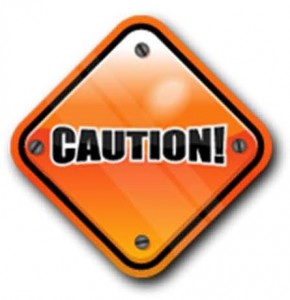#WordOfCaution
November 13, 2013Social media is a wonderful tool. It’s a great way to share and consume information. I’m particularly taken with Twitter, LinkedIn and Facebook – each quite useful and engaging in its own way. In fact, I often find these media outlets to be the most up to the minute, relevant, timely and accurate in terms of breaking news and information.
All that said, I do have a cautionary tale to share. Simply put, the person or name behind a social media profile may not be who you think it is. Allow me to explain.
 Today, I attended a leadership conference complete with terrific keynote speakers, breakout sessions, group activities and intermittent networking. As I often do when I hear a compelling speaker, I was tweeting (that is, using Twitter) salient points from their presentations. During the second breakout session I attended, I tweeted something like, “@So-and-So sharing key insights into such and such.” Within moments, my tweet was favorited by So-and-So and retweeted. That’s all well and good except So-and-So was still at the front of the room presenting! Which, of course, means that So-and-So does not manage his own Twitter account! Good thing I didn’t send him a direct message… I suspect he wouldn’t have received it, but his alias would have!
Today, I attended a leadership conference complete with terrific keynote speakers, breakout sessions, group activities and intermittent networking. As I often do when I hear a compelling speaker, I was tweeting (that is, using Twitter) salient points from their presentations. During the second breakout session I attended, I tweeted something like, “@So-and-So sharing key insights into such and such.” Within moments, my tweet was favorited by So-and-So and retweeted. That’s all well and good except So-and-So was still at the front of the room presenting! Which, of course, means that So-and-So does not manage his own Twitter account! Good thing I didn’t send him a direct message… I suspect he wouldn’t have received it, but his alias would have!
Reminds me of another story – this time related to Facebook. Two friends were having coffee; we’ll call them Jack and Jill. Jack is a well-known journalist. Jill is the president and CEO of a marketing firm. During their conversation, among the various topics discussed, Jack casually asked Jill’s opinion about a marketing campaign he was considering. Thinking about their talk that evening, Jill had an idea she wanted to share with Jack. Thinking the quickest way to get the information to him, Jill jumped on Facebook and sent Jack a message along the lines of, “Jack, I have some thoughts for you on the marketing issues we discussed. Give me a call when you have a chance.” All innocent enough, right? Wrong. What Jill didn’t know is that Jack does not manage his own Facebook page. Because of his journalistic notoriety, Jack has a social media firm on retainer which ensures that all social media communication from his readers and viewers is addressed in a timely manner and that commentary from Jack is constantly updated. Unfortunately, as it relates to Jill’s message, the social media respondent received the message – not Jack! He immediately called Jack in a panic asking if his firm was about to be fired! What? Jack was confused. It was a mess. A problem was created where none existed previously. Jill would really have had no way of knowing this – why would she?
The moral of these sad, sad stories is that we must be cautious when communicating electronically. I will go into greater detail in a future post regarding email communications. Focused for now on social media communications, be cautious – make sure you know who is receiving your messages before you post/send anything that might be embarrassing, too personal or confidential. You just never know who is viewing and responding to your remarks!

